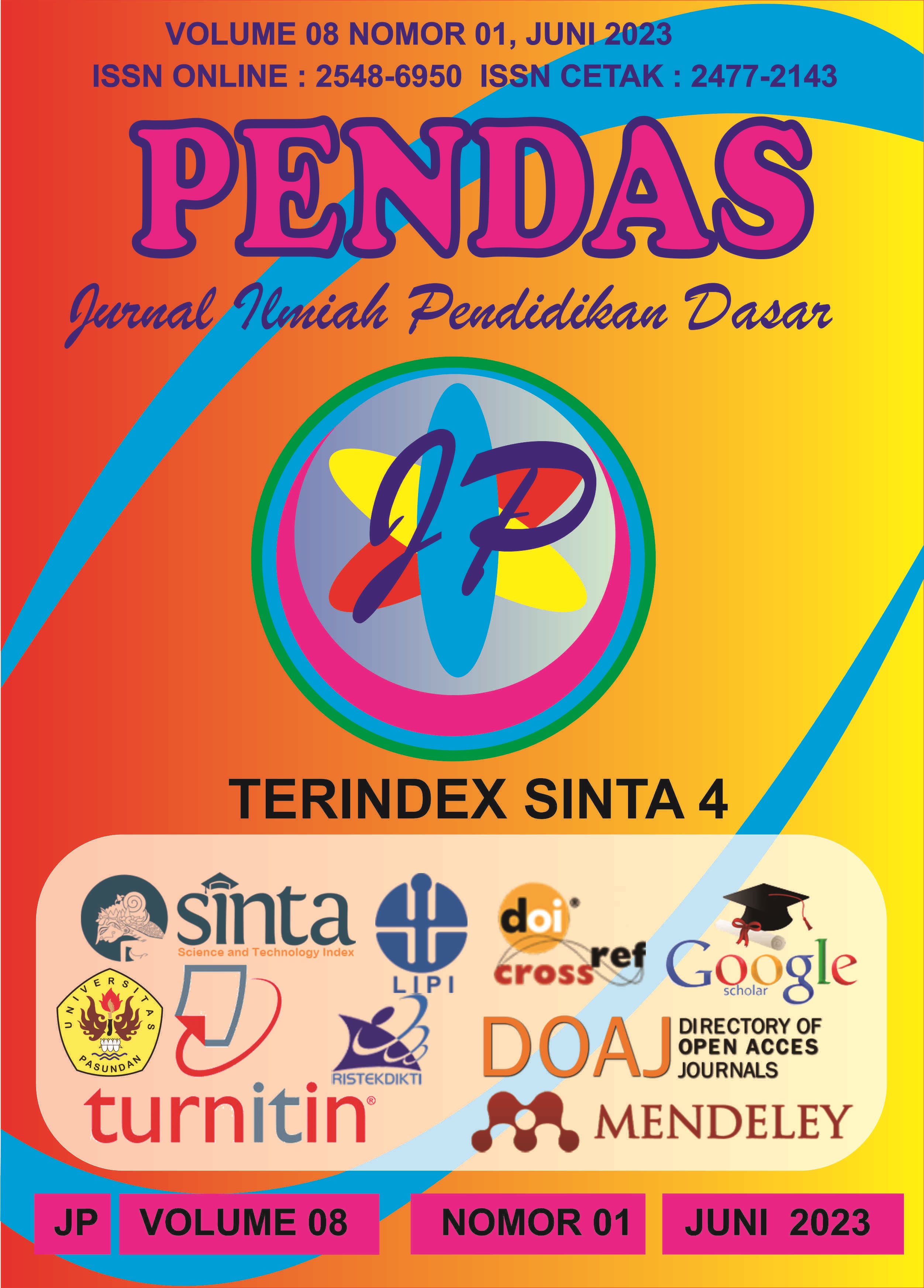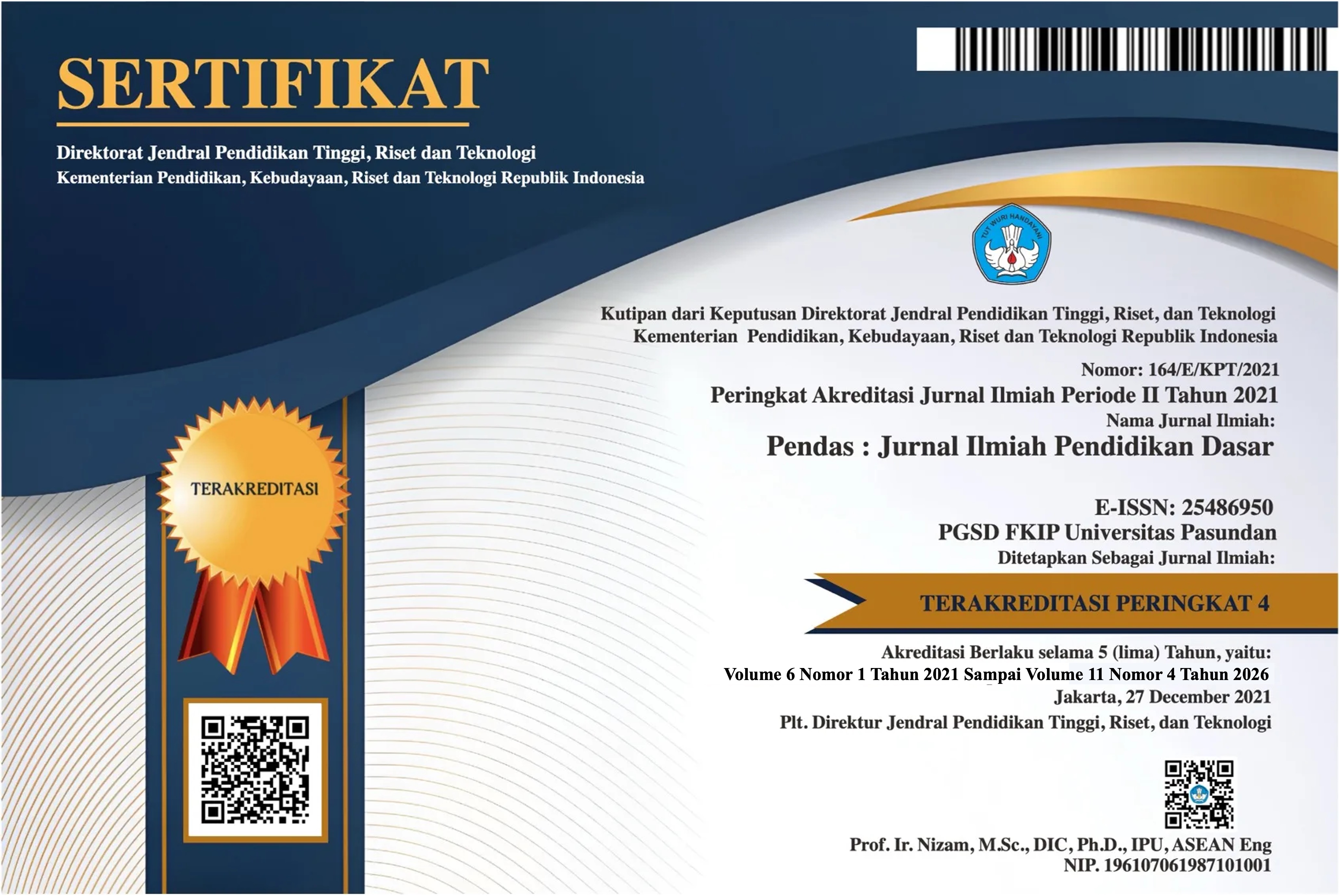PENERAPAN MODEL PEMBELAJARAN PBL MENGGUNAKAN PENDEKATAN TaRL
DOI:
https://doi.org/10.23969/jp.v8i1.7914Keywords:
PBL Learning Model, TaRL Approach, Interest in learningAbstract
This classroom action research was conducted on class 1 students at SD Negeri 1 Bajang, Mlarak sub-district, Ponorogo district, for the 2022/2023 academic year due to a problem, namely the low interest of students in learning. Through the PBL learning model with the TaRL approach it is expected to overcome these problems. The aims of this research is to increase students' interest in learning mathematics. This research is a class action research with 8 students as the subject of class 1 SDN 1 Bajang research. This research was conducted in 2 cycles, each cycle 1 meeting. Each meeting consisted of 4 stages, namely planning, implementation, observation, reflection. In the pre-cycle it was found that the learning interest of grade 1 students was 4.8 which were in the "low" category. In cycle 1 it was found an increase in student learning interest of 8.6 in the "medium" category. And in cycle 2 there was a significant increase in students' learning interest, namely 11 in the "high" category. Thus it can be concluded that the PBL learning model using the TaRL approach can increase students' interest in learning mathematics.Downloads
References
Asrori, M. (2016). Pengertian, Tujuan Dan Ruang Lingkup Strategi Pembelajaran. Madrasah, 6(2), 26. https://doi.org/10.18860/jt.v6i2.3301
Dr. Tedi Priatna, M. A. (2015). Scanned by CamScanner ﯼﺭﺍﺰﻤﮐ. A Psicanalise Dos Contos de Fadas. Tradução Arlene Caetano, 48. https://batukota.bps.go.id/publication/download.html?nrbvfeve=OTc4MDZhYzZhYzAyY2U4ZTBlNTNlYmJm&xzmn=aHR0cHM6Ly9iYXR1a290YS5icHMuZ28uaWQvcHVibGljYXRpb24vMjAxNS8xMC8zMC85NzgwNmFjNmFjMDJjZThlMGU1M2ViYmYvc3RhdGlzdGlrYS1kYWVyYWgta290YS1iYXR1LTIwMTUuaHRtbA%253D
Hadi, F. R. (2018). Penerapan Pembelajaran Problem Based Learning (Pbl) Untuk Meningkatkan Hasil Belajar Matematika Siswa Kelas Iv. Profesi Pendidikan Dasar, 3(2), 80. https://doi.org/10.23917/ppd.v3i2.2925
Hadi, F. R. (2021). Efektifitas Model Pbl Terintegrasi STEM Terhadap Kemampuan Berpikir Kritis Matematis Siswa Kelas V SD. Jurnal Pendidikan Tambusai, 5(3), 6644–6649. https://doi.org/10.31004/jptam.v5i3.2005
Hasanah, H. (2017). Teknik-Teknik Observasi. 8(1), 21. https://doi.org/10.21580/at.v8i1.1163
Masrun. (2018). Implementasi Model Problem Based Learning Dengan Media Lingkungan Aalam Sekitar Pada Materi Interaksi Makhluk Hidup Dengan Lingkungan Untuk Meningkatkan Aktivitas Dan Hasil Belajar Siswa. Paedagoria, 9(2), 75–81.
Mu’alimin, & Hari, R. A. C. (2014). Penelitian tindakan kelas Teori dan Praktek. Ganding, 44(8), 1–87. http://eprints.umsida.ac.id/4119/1/BUKU PTK PENUH.pdf
Mulyatiningsih, E. (2012). Modul Metode Penelitian Tidakan Kelas. Bandung Rosdakarya, 1–22. staff.uny.ac.id
Munir Yusuf. (2018). Pengantar Ilmu Pendidikan. Lembaga Penerbit Kampus IAIN Palopo, 126.
Novianti, A., Bentri, A., & Zikri, A. (2020). Pengaruh Penerapan Model Problem Based Learning (Pbl) Terhadap Aktivitas Dan Hasil Belajar Siswa Pada Pembelajaran Tematik Terpadu Di Sekolah Dasar. Jurnal Basicedu, 4(1), 194–202. https://doi.org/10.31004/basicedu.v4i1.323
Nurrohma, R. I., & Adistana, G. A. Y. P. (2021). Penerapan Model Pembelajaran Problem Based Learning Dengan Media E-Learning Melalui Aplikasi Edmodo Pada Mekanika Teknik. Edukatif : Jurnal Ilmu Pendidikan, 3(4), 1199–1209. https://edukatif.org/index.php/edukatif/article/view/544
Rahdiyanta, D. (2014). Penelitian Tindakan Kelas (Pengertian, Prinsip, dan Karakteristik PTK). Makalah Seminar Penelitian, 2–9. http://staff.uny.ac.id/sites/default/files/penelitian/dr-dwi-rahdiyanta-mpd/23-penelitian-tindakan-kelas-pengertian-prinsip-karakteristik.pdf
Rusmaini. (2014). Ilmu Pendidikan. 1–15.
Downloads
Published
Issue
Section
License
Copyright (c) 2023 Pendas : Jurnal Ilmiah Pendidikan Dasar

This work is licensed under a Creative Commons Attribution 4.0 International License.



















